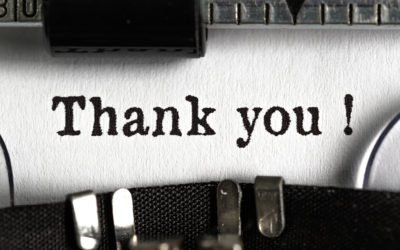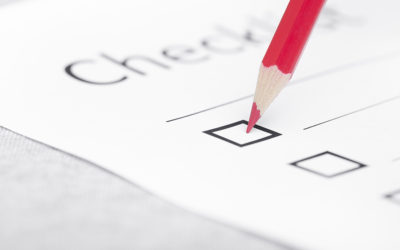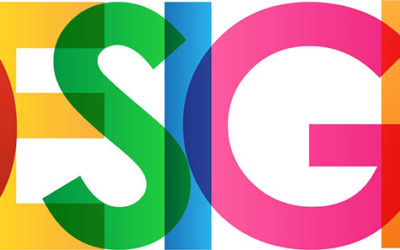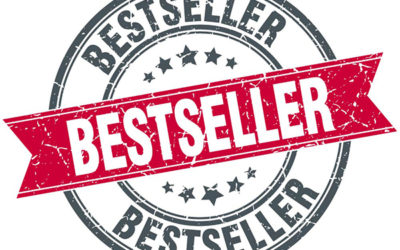HELPFUL INFO
“Help others achieve their dreams and you will achieve yours.”
~Les Brown
Who We Are & What We Do
The Book Couple (TBC) is a book-packaging boutique located in Boca Raton, FL, geared to helping new and veteran authors publish their books independently (aka self-publish) by producing professional print-ready cover and interior files of a professionally edited...
Editorial & Production Services Step by Step
The following is a basic guide to the steps of the editorial and production process. These steps are standard in publishing, but many first-time authors may not be familiar with them. We work closely with our authors through all these steps to ensure their vision for...
The Book Production Process
A book is produced from the words up. It’s constructed like a building with front and back, sides and interior, and with many rooms. They all need to be appropriately placed and furnished for maximum functionality and aesthetics. Covers The cover of a book is the...
Carol’s Role at The Book Couple
Carol is the editorial specialist at The Book Couple. You can learn more about her and her editorial services by visiting carolkillmanrosenberg.com. Traditionally, when an author completes a manuscript, they will want to have it reviewed by a book-industry editor...
Book Printing Options
As an independent author publishing under your own imprint, it is up to you to decide how to get your book into the distribution channels that feed to Amazon and other booksellers. The Book Couple will consult as needed and support whatever route you decide to take....
What’s the Rush?
Imagine you’re tasked with building a house. You work meticulously to draft the blueprints, build the walls, and oversee the electrical and plumbing work. Then, when the project is close to fruition, you become so eager to see the finished product that you rush to...
Publishing Platforms
The main platforms The Book Couple recommends for print-on-demand books that will reflect the author’s personal publishing imprint are Kindle Direct Publishing (KDP) and IngramSpark. KDP is affiliated with Amazon, and IngramSpark is affiliated with Barnes & Noble....
Printing: Commercial and Print on Demand (POD) Comparison
When it comes to printing your book, you have two choices: offset printing (aka commercial printing) and print-on-demand (POD printing). Years back, only commercial printing was available, and it required large print runs to be cost effective. With today’s technology,...
Staying on Schedule
The Book Couple looks forward to working with you to produce a high-quality book, and we are committed to completing it within the agreed-upon time frame. That time frame can be influenced by a number of factors, the most determinate of which is a scheduled event. If...
Supplying Art and Graphics for Your Book
When appropriate for your content, art and graphics enhance the visual appeal of your book. If you are working with us, please follow these guidelines: Electronic images should be high-resolution (minimum 300 dpi) in TIF, JPG, PNG, or PDF format. Images that have...
The Visual Difference Between E-books and Print Books
To make their books as accessible as possible to readers—and to capitalize on sales opportunities—we encourage our authors to consider both e-book and print formats, since some readers may prefer one format over the other. Each book needs to be handled as an...
Why Book Design and Typesetting Are Important
Each part of book production—from cover to cover—is essential in producing a quality product and a good read. But a lot of aspiring authors who choose to self-publish are unaware of the intricacies involved in design and typesetting, the key steps in producing a print...
Putting Your Book Cover to Work
Of all the elements that go into creating a beautifully and professionally packaged book, the cover has the greatest marketing potential. Your book’s cover is its face, and it’s the first real glimpse potential readers will get into your work. Giving your cover a firm...
Pricing Your Self-Published Book
In the self-publishing process, setting the retail price of a print book is one of the last things an author does before going live (publishing) on Amazon and other online booksellers. Some universal factors should be considered when setting the best price, one that...
What’s an ISBN?
An ISBN (International Standard Book Number) is a product identifier that’s used by publishers, libraries, booksellers, and internet-based booksellers, such as Amazon.com and BarnesandNoble.com, for listing, ordering, sales records, etc. An ISBN identifies the...
Publishing Short Stories and Poetry to Build Your Author Platform
A strong author platform is essential to getting your book into your readers’ hands.
Author Platform: What Is It?
With almost a million books published each year in the United States alone, the publishing industry is akin to a thick stew. You’ll find lots of tasty morsels in that pot, but separating them out takes work. Likewise, it’s difficult for any one book to stand out...
Writing Your Author Bio: About the Author
An author’s bio appears in the “About the Author” section of a book. Traditionally, it’s the very last page of the book and is often accompanied by a professional headshot. We refer to this as the “long bio.” A more succinct...
A Sell Sheet for Your Book
Traditionally, publishers put out a catalog featuring their new releases every season. Some houses also include the publisher’s backlist (all the previous titles published) in the seasonal catalogs. The purpose of these catalogs is to get bulk book buyers, like...
8 Must-Do’s to Self-Publish Responsibly
We have been trade book publishing professionals for quite some time now, and we’ve seen a lot of changes in the industry. But the one thing that never changes is the care and attention a book needs to make it a quality product. In traditional publishing, a manuscript...
Independent Publishing vs. Traditional Publishing
Are you tossed between traditional publishing and independent publishing (aka self-publishing)? These days, there is no “right” way to publish. The path to choose depends on your motivations as an author and an entrepreneur. Here are 6 factors to consider: 1. Interest...
Why You Shouldn’t Rely Solely on Grammar Checks and AI for Your Writing
The Human Touch in the Art of Writing By A. I. Assistant In an age where technology is advancing at a breakneck pace, it's no surprise that grammar checks and AI writing tools have become integral parts of the writing process for many individuals. These tools promise...
Writing Your Book Description
For some readers, a book’s description may be their very first glimpse into your work. This description must do more than just tell the reader a little about what to expect from your book; it must do so in a way that entices them to want to read the whole thing. An...
Writing the Acknowledgments for Your Book
Your book is on the verge of being published, and there’s one more item on your pre-publication to-do list: the acknowledgments section. This is your chance to express your gratitude to all of the people who have supported you (personally and professionally) while you...
Industry-Standard Style Overview
The following are a few book industry standard styles based on The Chicago Manual of Style (CMS). There is no need to memorize all this information! An editor or copyeditor with book publishing experience will be familiar with most of these standards. Note that some...
How to Check Your Page Proofs
Page proofs are the designed and typeset pages of your manuscript in the trim size and layout you decided upon with your book designer. First-pass page proofs are your initial look at how your book will appear in its printed form prior to publication. Traditionally,...
What Is a Beta Reader?
Spend enough time among fellow aspiring authors and the writer is bound to encounter the term “beta reader.” As unassuming as their title may be, beta readers can fill an indispensable and multifaceted role in an author’s journey to publishing a well-received book....
Page Proofs and Advanced Reader Copies (ARCs)
Once a manuscript has been edited and finalized by the editor and author, the MS Word or Apple’s Pages document is transmitted to the book designer for design and typesetting. The book designer creates an interior design sample(s) for the author’s input and approval....
Proofreader’s Checklist
Proofreading is an essential stage of the publishing process. The proofreader is usually the last set of eyes to read your book before you put it into the hands (and under the eyes) of your readers. No matter how many times you and your editor (or even your friends)...
The Main Elements of a Book
The following are all the elements of a nonfiction book in the order they traditionally appear in a published book. Not every book will include every element, of course, but some books will include them all. Fiction titles my have a prologue in place of the...
Additional Typographical Features of a Book
If you haven’t already, read our post “The Main Elements of a Book.” You’ll need that as a starting point. Depending on the subject matter, your book may require that some elements of the text be treated differently than the running copy for the sake of emphasis, for...
Book Publishing Industry Standard Reference Books
“Like everything metaphysical the harmony between thought and reality is to be found in the grammar of the language.” ~Ludwig Wittgenstein It’s essential to have a quality reference guide to refer to during the preparation of a nonfiction manuscript. (It’s less...
A Leap of Faith: The Catch-22 of Publishing
It’s undeniable that having your book published traditionally lends a certain level of credibility to that book. In bygone days, being a quality writer was enough to make your work stand out. But as more quality writers have brought their voice to print, the...
Barnes & Noble Book Signings for the IngramSpark Author
If you’re an indie author who is publishing a book through IngramSpark and you would like to have a book signing at your local Barnes & Noble, you will need to speak with the manager of the store to make those arrangements. Before doing so, you must make sure a...
Book Formats
When you’re deciding which format or formats your book should take, it’s important to know your options and also that you don’t have to settle for just one type. For example, e-books can be more convenient than a physical book, but they’re not very good for book...
What Is a Press Imprint?
A press imprint or publishing imprint is the name of the publisher of your book. It appears on the back of your book, inside your book, and in the metadata associated with your book, which you will see listed on Amazon and other online booksellers under “publisher.”...
A Website for You and Your Book
It’s always a great idea to register a URL that matches the title of your book as soon as you settle on your title. So, for example, if your book is titled Passion Is the Way, you could purchase the URL passionistheway.com through a website-hosting company, such as...
An Interview with The Book Couple
Tell me about yourselves and what you do. Carol: I’m an editorial specialist. Gary: And I’m a graphic designer and typesetter. We live in Boca Raton, but we’re originally from Long Island, New York. We’ve been here for 15 years now, and we’re so glad we made the move....
Your Author Website: Why WordPress Is an Excellent Choice
According to a number of sources, over one-third of websites are powered by WordPress. In fact, the site you’re reading this article on right now is powered by WordPress. A huge part of WordPress’s appeal is that it you don’t have to be a tech-savvy coding guru to use...
Your Publishing Rights
As a self-publisher, you own all the rights to your work: foreign, translation, movie, audio, etc. If you get picked up by a publisher later on, rights are negotiated during the contract process. They will advise you at the time. Here is some helpful information on...
Filing for a Copyright with the U.S Copyright Office
The following is informational only and does not constitute legal advice. If you have a question or concern about copyrighting your work, please contact the U.S. Copyright Office or a copyright attorney for assistance. According to the Copyright Act of 1976, a work is...
Checking Book Sales on KDP and IngramSpark
When you publish with KDP or IngramSpark, they make it relatively simple to keep track of your book sales, create spreadsheets, and monitor the peaks and valleys in online retail activity. You can use these tools to track seasonal sales or see the short-term effects...
Amazon’s Author Central Checklist and Tips
In this digital age, establishing a foothold as an author worth reading requires a strong online presence. As with editing and many other aspects of a book’s production, where and how you choose to build that presence is subjective, but it’s a good idea to take as...
The What & Why of a Press Release
“A press release, news release, media release, press statement, or video release is an official statement delivered to members of the news media for the purpose of providing information, an official statement, or making an announcement.”[1] Thanks, Wikipedia! We...
Book Award Resources
What author wouldn’t want the cover of their book to exclaim “Award Winning”? Potential readers notice that sort of thing, and your friends and family (as well as your editor and book designer) will be so proud of your accomplishment! If you’re among the many authors...
7 Tips for Hosting a Book Launch Party
In book publishing, it’s traditional to host a book launch party the day or week of your book’s official release. Some authors elect to host a small launch party—a gathering of their friends, family, and maybe even their publishing team to thank them for their support...
How Does a Book Become a Bestseller?
So, how does a book become a bestseller? Throughout my twenty-one years in trade book publishing, I’ve asked this question, I've been asked this question, and I’ve discussed potential answers to this question with other book publishing professionals from time to time....
A Note About Pen Names
Promoting a book often falls onto the author’s shoulders. Imagine if that person’s name didn’t match the byline on their book. Not only would that be confusing, but it would also hinder their ability to self-promote. So why would anyone want to use a pen name in place...
Writing a Book? Identify Your “Why”
This is a handout we put together to help you identify your reasons for wanting to write that book you've been thinking about writing. You're welcome to save this as an image on your desktop, which you can then print out and fill in, if you'd like. When you are ready...
Writing a Book? 8 Ways to Stay Motivated and Inspired
One of the hard parts of writing a book is keeping yourself on task so the vision in your head becomes words on the page. Here are eight ideas for how you can keep your will to write strong and steady when you feel it starting to slip away. Set aside time every day,...
Building a Writing Environment
Just like a plant needs healthy soil, water, and plenty of sunshine to thrive, your mind needs the right environment to tap into its creative potential. Cultivating a writing environment that is always there for you allows you to keep that momentum that drives you to...
Coaching for Creativity
Creativity is the quality or power to create. We are all creative beings. We create ourselves anew every day through our actions (or lack of action) and interactions with the world and one another. There are many levels and types of creativity, or creative expression....
The Purposeful Writing Playlist
If you aren’t set on complete silence when you write, having proper background sound can help keep you focused and in a creative mindset. Choices include lyrical music, instrumental music, nature sounds, and even white noise. There are numerous apps and websites...
Writing Fiction: A Matter of Perspective
Perspective refers to the narrative approach to storytelling, while point of view (POV) refers to who is telling or narrating a story, be that an unnamed narrator or a POV character. First-person and third-person perspectives are common in fiction, but...
Writing Flashbacks
A flashback can be a powerfully evocative tool for drawing a reader closer to the story. Often, flashbacks convey vital, plot-driving information to the reader, or they expand the reader’s understanding of a key character. There is, of course, a downside to...
Editing for the Poet
The Merriam-Webster Dictionary contains several definitions for the word “poetry,” but perhaps the most poetic of those definitions states that poetry is “writing that formulates a concentrated imaginative awareness of experience in language chosen and arranged to...























































